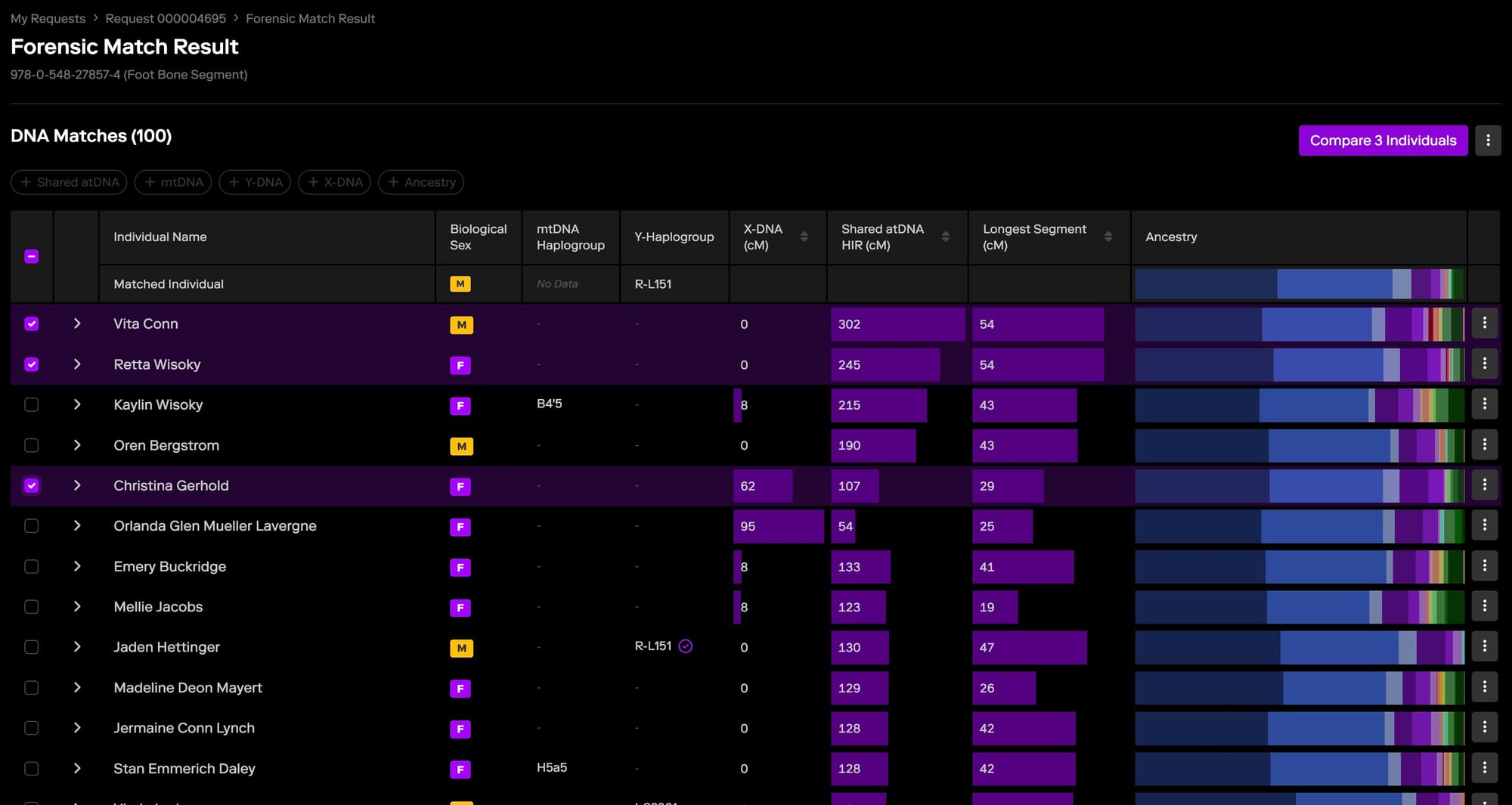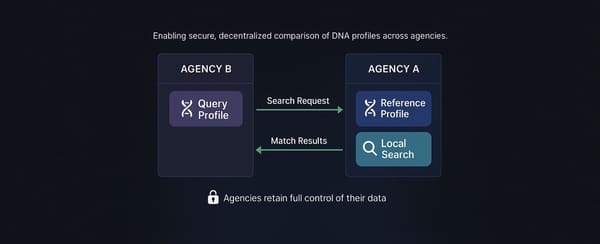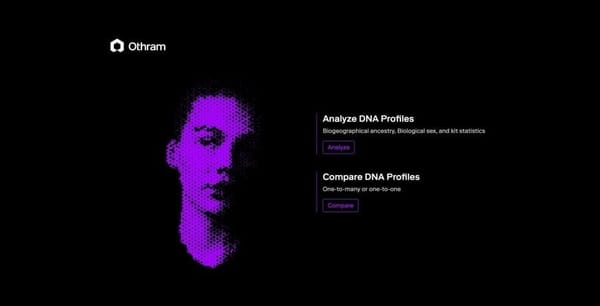We recently introduced the Multi-Dimensional Forensic Intelligence (MDFI) platform, a comprehensive platform designed to integrate and optimize each step of the forensic genetic genealogy process. You can learn more about MDFI here.
Today, we are excited to share two new features within the MDFI platform: the “Shared Matches” view and the “In-Line Biogeographical Ancestry” view. These enhancements are designed to reduce the time and effort required by law enforcement and forensic genealogists to resolve forensic cases.
Unveiling Connections with Shared Matches
When a DNA profile is searched, it’s compared against other profiles in our platform, generating a list of matches—people who share some portion of their DNA with the searched profile. The "Shared Matches" view takes this a step further by identifying which of these matches are also genetically connected to each other.
Imagine you’re trying to piece together a jigsaw puzzle, but you’re not sure which pieces fit together. The "Shared Matches" view helps by showing you which pieces (or in this case, which people) are connected, making it easier to see the big picture. It groups matches into clusters based on their shared DNA, which often corresponds to specific branches of a family tree.

Here are some practical use cases of this new view:
- Cluster Identification: By grouping matches into clusters that likely represent different branches of the family tree, investigators can quickly identify which lines of descent are most relevant. For example, if several matches are all connected and share a common ancestor, this points toward a specific family line that might be the key to identifying the unknown person.
- Enhanced Triangulation: The "Shared Matches" view supports triangulation, which is a method used to confirm that certain DNA segments are shared by multiple people because they inherited it from a common ancestor. This can be crucial in pinpointing relationships and focusing the investigation on the right people.
- Streamlined Research: Instead of having to sort through potentially hundreds of matches individually, the "Shared Matches" view allows investigators to prioritize those who are most likely to provide clues needed to solve the case.
Realtime Insights with In-Line Biogeographical Ancestry
While many platforms offer biogeographical ancestry tools, our “In-Line Biogeographical Ancestry” feature is unique in that it displays this information directly in-line with the match list. This means investigators don’t have to jump between different reports or tools to see where the matches come from—they can get this information with just a glance.

Biogeographical ancestry refers to the geographic regions and populations your ancestors came from. In forensic investigations, this information can provide important context about the origins of an unknown individual or suspect.
Think of it like having a world map that highlights the regions where your family has roots. Now imagine that you’re looking at a list of people who are genetically related to you, and next to each name, you can see where their ancestors came from. This gives you immediate clues about your own origins, helping you piece together your story.

In a forensic investigation, there are many ways to leverage this information:
-
Geographical Context: Suppose you’re investigating an unidentified body found in a region where the population is predominantly of Northern European descent. If your DNA analysis reveals that the closest matches on your list have ancestors from Southern Europe or South Asia, this might suggest that the individual recently moved to the area, or their family history involves migration. This context helps investigators narrow down their search for the person’s identity.
-
Focused Hypothesis Testing: If you have several matches who all share a common biogeographical ancestry—say, they all have roots in Eastern Europe—this could indicate that the unknown person is also likely to have Eastern European ancestry. This insight helps you focus your investigation on that specific region, potentially leading to a quicker identification.
-
Strategic Prioritization: When working with a large match list, In-Line Biogeographical Ancestry allows you to quickly filter and prioritize matches that are most relevant based on their geographic and ethnic origins. For instance, if you’re dealing with a case in a specific region and you see that some matches have a matching biogeographical background, you might focus on those matches first.
Explore the New Features Today
We invite you to explore these new tools within the MDFI platform. Whether you’re working to identify a suspect or unknown remains, these features are here to support your efforts and make your life easier as you work to solve cases.
Let’s work together to unlock answers and bring justice to those who need it most. Get started here.






